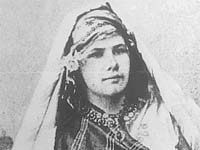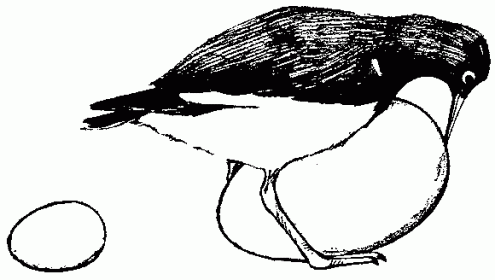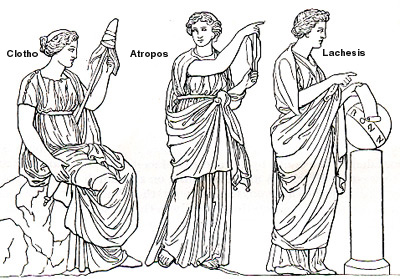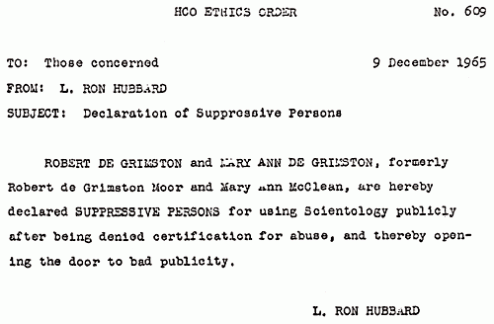The Montauk Monster
I have hidden this entry from view due to the grotesque nature of some photographs contained within. Click the link below to see the full article.
The British Military’s LSD Experiments
After Swiss scientist Albert Hofman accidentally synthesized Lycergic acid diethylamide- 25 (better known as LSD) in 1938, various organizations, both public and private, embarked on diverse and fascinating experiments with the powerful hallucinogen. The following video shows what happened when LSD was administered to a group of British Army soldiers in the mid 1950s. While the experiment’s premise was quite serious, its results are undeniably humorous.
Across the Atlantic, the American Central Intelligence Agency also performed extensive tests using LSD, under the umbrella of a project dubbed MK-ULTRA. The results of the ensuing experiments range from amusing to horrifying, and will be the subject of a future Irrational Geographic entry. In the meantime, I encourage you to take a glance at the following Wikipedia entry:
The Cryptocartography of Piri Reis

Hadji Muhiddin Piri Ibn Hadji Mehmed, better known as Piri Reis, was a Turkish admiral and cartographer who produced many historically important and remarkably accurate maps of the Mediterranean during the first half of the 16th century. Perhaps his most famous map, drawn in 1513, is known as the First World Map. This map has been the subject of much speculation and contention due to some of its striking and peculiar characteristics, specifically its depiction of South America and what may be Antarctica.

Drawn on gazelle skin and measuring 90 cm x 63 cm , the map was lost to the world until its rediscovery in 1929 in Istanbul’s Topkapı Palace, a discovery that has sparked decades of debate. Text on the map states that Reis drew it based largely on ancient cartographical information that he gathered from other maps drawn by Roman cartographer and all-around Renaissance man Claudius Ptolemaeus (better known as Ptolomy) who lived during the 2nd century AD. (Ptolomy, it should be noted, introduced the use of longitude and latitude, which are essential tools of modern cartography). Reis also drew information from Indian, Portuguese, and Arabic maps, and even a map drawn by Christopher Columbus. Some of his source maps, historians speculate, were derived from those housed in the legendary Library of Alexandria before it burned in 48 BC, depriving the modern world of incalculable volumes of ancient knowledge.
Synthesizing information from such diverse sources, Reis compiled one of the most accurate world maps of the 16th century. Here is an illustration of the remarkable precision with which the First World Map depicts the eastern coast of South America.

What makes this map truly fascinating, however, is the land mass depicted to the lower right. While some claim that is it a misplaced representation of Patagonia, others contend that it is in fact the coastline of Antarctica. This latter interpretation has forced historians to drastically reconsider the timeline of ancient geographical knowledge.

If the First World Map does indeed depict Antarctica, this invalidates the widely held assumption that humans first discovered Antarctica in 1820 when a Russian expedition stumbled upon the massive continent. Even more startling, however, is that fact that the area of Antarctica purportedly shown on the map, known as the Princess Martha Coast, has been covered by large sheets of ice, measuring a mile thick, for over 6,000 years. The U.S. Navy Hydrographic Bureau has employed modern technology to peer beneath this cover of ice and map the actual coastline, and has found that the First World Map depicts it with startling accuracy. Here is a letter from Air Force Commander Harold Z. Ohlmeyer to Charles H Hapgood, an expert who has written extensively about Piri Reis, regarding the map’s accuracy:
“6, July, 1960
Subject: Admiral Piri Reis Map
TO: Prof. Charles H. Hapgood Keene College Keene, New Hampshire
Dear Professor Hapgood,
Your request of evaluation of certain unusual features of the Piri Reis map of 1513 by this organization has been reviewed. The claim that the lower part of the map portrays the Princess Martha Coast of Queen Maud Land, Antarctic, and the Palmer Peninsular, is reasonable. We find that this is the most logical and in all probability the correct interpretation of the map. The geographical detail shown in the lower part of the map agrees very remarkably with the results of the seismic profile made across the top of the ice-cap by the Swedish-British Antarctic Expedition of 1949. This indicates the coastline had been mapped before it was covered by the ice-cap. The ice-cap in this region is now about a mile thick. We have no idea how the data on this map can be reconciled with the supposed state of geographical knowledge in 1513.
Harold Z. Ohlmeyer Lt. Colonel, USAF Commander”
Could it be possible that an ancient thalassocracy, unknown to modern historians, discovered and mapped in great detail the coastline of Antarctica 6,000 or more years ago, and then passed this information down through the millennia until it found its way into the Library of Alexandria only to be fortuitously reproduced before it would have otherwise been forever lost upon the library’s destruction? While many modern academics dismiss this theory as fantastical poppycock, I cannot bring myself to discard the possibility that ancient civilizations were advanced in ways that would astound us if only their accomplishments hadn’t been lost to the great eraser of time.
Some Further Reading:
Here is an extensive look at the controversies surrounding the map
A site devoted to the history of polar discovery
A blog that links to many interesting sites concerning cartography
A bit about the tragic destruction of the Library of Alexandria
The Haunting Specter of Phobos

The planet Mars is orbited by two irregularly shaped moons, neither larger that 15 kilometers across. The smaller of the two, named Phobos after the Greek god of terror, measures only about 11 kilometers across and is closer to its primary planet than any other moon in our solar system. It is so close to the surface of Mars, in fact, that it orbits the planet twice daily. What has led astronomers, writers, and science fiction enthusiasts to so much speculation regarding Phobos is its peculiar size and shape, making it look like a sinister extra terrestrial skull drifting through the void of space.

This series of photos shows Phobos passing in front of the sun, as seen from the surface of Mars by the NASA rover Opportunity
Discovered in 1877, Phobos has long stood out amongst non-planetary astronomical bodies due, in addition to its odd shape, to the non-reflective quality of its surface. This has led astronomers to speculate that it may have originally been an interstellar asteroid that was caught in Mars’ gravitational orbit. The porous nature of its composition suggests that Phobos’ mass is startlingly low, an observation which led to a widely-held theory, popular in the 1950s and 1960s, that Phobos is nothing more than a hollow metal shell, perhaps serving as a Martian space station. This reasoning has been called into serious question by more recent observations.

When studying Phobos from afar, much attention has been paid to its series of odd and quite large craters. Several of these are named after characters from Jonathan Swift’s 1726 novel Gulliver’s Travels, which hypothesized that Mars has two moons many years before this was discovered to be the truth. The largest crater, dubbed Stickney after the wife of the astronomer who first identified Phobos, measures 9 kilometers across.

Stickney Crater as seen by the Mars Reconnaissance Orbiter
What makes Phobos an object of particular interest, however, is not its curiously porous composition. Phobos stands out in the night sky because of the undefinably ghastly quality of its appearance. Whether imagined as the rotted skull of an immense species long extinct, a ghostly bit of refuse from a distant, wicked solar system, or a malicious eye socket gazing at us from a mere 35 million miles away, Phobos is aptly named. It seems fitting, then, that Phobos itself is not long for this world. Due to its low orbit, Phobos is expected to, in about 11 million years, crash into the surface of Mars, crushing this celestial wraith into bits of dust.
Some Further Reading:
Some interesting facts about Phobos
A succinct list of facts about Phobos, complete with various maps and images
An Inquiry Into Notable Historical Figures: Isabelle Eberhardt
When pondering eras past, is it deceptively easy to reduce an entire culture, time-period, or social movement to a simplified list of customs, events, and personalities. One of Irrational Geographic’s missions is to highlight moments and individuals that have the ability to jar us out of this facile interpretation of history. An exemplary specimen of this is the traveller, hedonist, writer, and all-around iconoclast Isabelle Eberhardt (1877 – 1904).

Growing up in Geneva during the final years of the 19th century, Eberhardt possessed the then unheard-of cultural advantages of having an intellectual, nihilist, former Orthodox priest for a father and an aristocrat with imperial familial connections for a mother. This combination of influences and resources, coupled with an endlessly inquisitive nature, gave her the wherewithal to embrace foreign cultures and languages, and the means with which to pursue these interests through study and travel.

Since women were afforded precious few rights in 19th century Switzerland, Eberhardt augmented her autonomy by dressing as and affecting the mannerisms of a man. This would allow her freedom hitherto unknown to women when she was brought by her mother first to other parts of Europe, and later to northern Africa. Eberhardt’s father encouraged her cross-dressing, and further aided her personal growth by teaching her six languages, cultivating in her an interest in metaphysics, and introducing her to Islam. Eberhardt’s life trajectory was cemented when her family relocated to Algeria and fell in with Arab anti-imperialists.

Upon the death of her mother, Eberhardt was finally afforded the freedom to pursue her passions on her own terms. As she herself put it, “The farther behind I leave the past, the closer I am to forging my own…” Following the death of her father two years later, Eberhardt fully embraced the nomadic lifestyle of Sahara-dwelling Arabs. Her promiscuous tendencies made it well-known that she was biologically a woman, but the Arab community accepted her as a man. She also indulged in the use of drugs and alcohol, despite the fact that these endeavors were prohibited by Saharan custom. In the words of one of Eberhardt’s friends, “She drank more than a Legionnaire, smoked more kif than a hashish addict, and made love for the love of making love.” This highlights the contradictory nature of the hybrid identity that Eberhardt managed to establish.

Despite the apparent ambiguity of her cultural allegiances, Eberhardt was spiritually committed to, and fully accepted by, the secretive Sufi sect (even becoming a close friend of the sect’s spiritual leader), which seemed to turn a blind eye to her decadent lifestyle. Eberhardt also managed to marry and Arab soldier named Slimene Ehnni, who apparently tolerated her notorious promiscuity. Herein lies the intriguing mystery of Isabelle Eberhardt. She was a European-born white woman who lived freely in the Arab world as a man (assuming the masculine name Si Mahmoud Essadi), openly using drugs and alcohol while a devoted member of a temperant sect, and maintaing a marriage with an Arab man while still freely exploring her sexuality. She was a woman of contradictions who redefined the world in which she lived.

It seems fitting, then, that even in death she was an iconoclast. Eberhardt once wrote that, “Death does not frighten me, but dying obscurely and above all uselessly does.” The universe was seemingly ignorant of, or humorously invested in, this sentiment when, on October 1 of 1904, the 27-year-old Eberhardt, while recovering form a bout of malaria, perished in a flash flood in the Ain Sefra municipality of Algeria. This death could not, it seems, have been any more obscure or useless.

While relatively unknown during her lifetime, Eberhardt’s writings have received some posthumous attention. Several journals and one novel, penned by Eberhardt during her travels, give contemporary readers a glimpse into the unique life of a cross-dressing, hedonistic, European woman living happily in the orthodox climate of turn-of-the-century northern Africa. Several essays, linked below, explore many intriguing facets of Eberhardt’s life and adventures.
Some Further Reading:
An interesting article exploring the unconventional nature of her life
A site that discusses Eberhardt’s writings
The Peculiar Cant of Ciazarn
It is not uncommon for a specialized vocabulary to be spoken amongst members of a group united by profession. Sailors, soldiers, actors, and doctors all regularly speak words and phrases that are rarely, if ever, used by lay people. But only seldom throughout history does one find groups of people among whom nuanced and extensive systems of secretive slang, known as cants, have emerged. One of my favorite such bodies of slang is the cant, known as Ciazarn, spoken by American carnival workers (carnies), during the first half of the 20th century.

The word Ciazarn itself (pronounced KEY-uh-zarn) illustrates the mechanics of this cant. In order to convert a normal word into Ciazarn, extra syllables, usually consisting of i, a, and z sounds, are added into the middle of the word. Carny becomes key-uh-ZAR-nee, hence the name of the cant. Another example is the word gimmick which, in Ciazarn, is pronounced as gee-ya-ZIM-ick. The rules of this cant are simple enough, but when spoken rapidly it allowed carnies to openly converse with one another without being understood by the carnival patrons. When coupled with an extensive vocabulary of additional slang terms, this linguistic contortion allowed the carnies to easily collude in bilking rubes.
It should be noted that some contemporary hip-hop slang follows similar guidelines. In the early 21st century, rappers Snoop Dogg and Jay Z popularized the insertion of “izzle” into the middle of words. Perhaps the most well-known example of this is the phrase “fo shizzle”, which is a modified version of “for sure”. This is very close to the Ciazarn version of the phrase, which would have been pronounced “for SHE-uh-zor”. Another popular cant used in modern English is Pig Latin, which follows a distinct yet similarly simple set of rules for word alteration. Pig Latin differs in that it requires a rearrangement of the word’s vowels with an “ay” sound added on the end, “sure” being pronounced “uhr-shay”,
See-uh-zum Fee-uh-zurther Re-uh-zeading:
An article about Parlyaree, a cant spoken among members of the British gay subculture during the 1950s and 1960s (some of the phrases remind me of Anthony Burgess’ Nadsat, mentioned in a previous entry)
A compendium of Vaudeville slang that is certainly worth reading
A list of various cants, along with links to articles about them
The Pitfalls of Supernormal Stimuli
“…(supernormal stimulus) refers to a paradoxical effect whereby animals show greater responsiveness to stimuli that differ substantially from the “natural” stimulus.”
– J.E.R. Staddon, Behavioral Psychologist
I recently learned of the writings of Dutch ethologist Nikolaas Tinbergen (1907-1988), who performed some fascinating experiments on birds, specifically oystercatchers.

Shorebirds found all across the globe, oystercatchers possess a hard-wired trait that caught Tinbergen’s attention. After laying several eggs, female oystercatchers are faced with the choice of which egg to brood atop, and thus incubate the enclosed embryo until its hatching. Since larger eggs are more likely to produce healthy chicks, these birds are programmed to select their largest eggs for brooding. This tendency produces very odd results, however, when it is exposed to supernormal stimuli. In this case, Tinbergen placed the much larger eggs of a totally different species of bird along side the oystercatchers’ eggs. Surprisingly, the oystercatchers hopped right atop these absurdly large eggs, ignoring their own.

Here is former Food and Drug Administration Commissioner David A. Kessler’s explanation of this counterintuitive behavior:
“From the standpoint of evolution, a bird’s preference for a larger egg over a smaller one makes sense. Smaller eggs are more likely to be nonviable, so birds that consistently choose them would not have been likely to survive as a species. Their preference for a giant egg is a logical extension of a preference for the egg that seems most likely to be viable.”
The power of the supernormal stimulus of egg size to hijack the oystercatchers’ ingrained survival mechanisms is strong enough to cause these birds to cuckold themselves, expending precious time and energy to bring another bird’s child into the world. While this effect is curious when observed among birds, its results are more startling when applied to humans. An oft-cited example of this is the contentious issue of the portrayal and attractiveness of female bodies. For example, throughout history many women have had their bodies altered to make their breast bigger or appear to be bigger, whether through body-molding clothing or, more recently, surgery and photo editing.

Venus of Willendorf is a limestone carving of a woman’s body discovered in Lower Austria. It is believed to date from 24,000 BCE – 22,000 BCE. Her breasts are swollen to absurd proportions.
The Venus of Willendorf carving shows that the issue of male attraction to exaggerated, unnatural female forms is nothing new. University of Cambridge archaeologist Paul Mellars observes that, “…(Venus of Willendorf) could be seen as bordering on the pornographic.” This is an example of how male attraction to breasts, although having originally coevolved with actual female breasts, can be triggered by portrayals of exaggerated and unnatural breasts.
Another illustration of how supernormal stimuli can kidnap ingrained human desires and redirect them toward artificial ends can be found on the menu of any fast food restaurant.

This chart compares the calories and fat contained in hamburgers served at some leading fast food chains
When competing for survival, pre-agricultural humans benefited greatly from eating as much animal fat as they could get their hands on due to its rich caloric content. As a result, the human tongue and brain grew to find fat quite palatable. In modern society it is much easier to gain access to fatty foods, but the tongue and brain can still be motivated by a primal desire to eat as much fat as possible, as if stockpiling calories in the face of potential periods of famine. In their book Understanding Nutrition, nutritionists Elli Whitney and Sharon Randy Rolfes claim that a healthy adult should consume 45 to 75 grams of fat each day. Many of the hamburgers on the above chart, however, exceed this daily amount despite the fact that they are meant to comprise just one meal (foods containing wildly inflated amounts of fat, salt, sugar, and so on are dubbed “hyperpalatable” by food scientists).
The overwhelming popularity of these restaurants (McDonald’s having famously served “billions and billions”) demonstrates how a human drive that originally aided survival now leads many to consume significantly more fat than their bodies require, potentially to the detriment of their health. These chain restaurants, however, are not fully to blame for selling such hyperpalatable food. As W. Philip T. James of the International Obesity Task Force points out, “It is little wonder that food manufacturers, responding to taste panels and sales returns, have focused, particularly in the last two decades, on providing this evolutionarily rare but highly prized sensory mix as a routine in an increasingly varied number of foods made for convenient consumption.”
There are many more examples of supernormal stimuli leading people to self-destructive behavior, ranging from drug addiction (certain drugs, such as cocaine, stimulate a massive release of dopamine in the brain, whereas dopamine is released in much smaller quantities under natural circumstances) to video game enthusiasts literally starving to death after playing World of Warcraft for days on end without interruption. The conclusion to be drawn is that, in order to enjoy the spoils of modern life healthfully in the face of ubiquitous supernormal stimuli, a certain resistance to one’s own chemical drives is neccessary. This is no easy task, however, since the brain is literally built to perceive the satisfaction of these desires as necessary for survival.
Some Further Reading:
A very interesting article about how supernormal stimulus is used in product marketing













